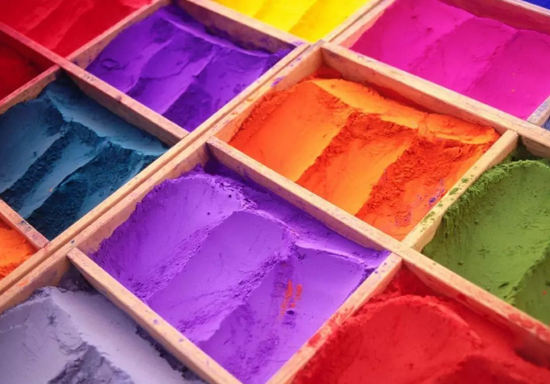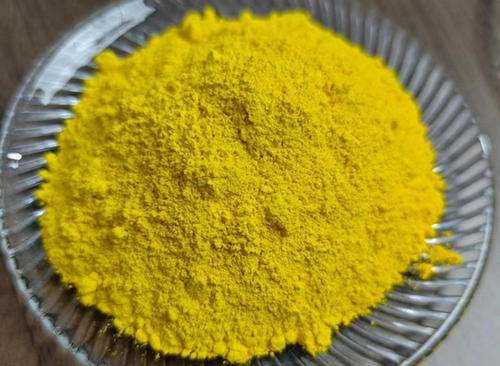Organic pigment manufacturer says that colorants are mainly divided into dyes and pigments.
Dyes are colorants dissolved in water or other solvents, and pigments are colorants insoluble in water or other solvents, which are mainly dispersed in the medium used to color the colored objects with fine particles dispersed in the medium.
In addition to the properties of light resistance, weather resistance, acid and alkali resistance, solvent resistance, migration resistance and so on, which are similar to those of dyes, pigments also have other specific properties, such as color light, coloring power, dispersion, covering power, heat resistance, water permeability resistance, warping resistance and so on.
Pigments are divided into inorganic pigments and organic pigments.
Inorganic pigments are generally some metal salts or oxides, which can be subdivided into oxides, chromates, sulfates, silicates, borates and so on. Inorganic pigment has excellent thermal stability and light stability, low price, so it is used in large quantities, but the disadvantage is that there are not many varieties, the coloring power is relatively poor, the relative density is large, and it is generally not bright enough.

Organic pigments have high coloring power, bright color, complete chromatogram and low relative density, but they are usually inferior to inorganic pigments in terms of heat resistance, weather resistance and covering power. However, with the development of organic pigment technology, these shortcomings have been greatly improved and their application fields have been further expanded.
Among the yellow pigments, the common high-performance pigments are pigment yellow 138, pigment yellow 139, pigment yellow 151, pigment yellow 154, pigment yellow 155, pigment yellow 180 and so on.
Inorganic pigments and organic pigments are insoluble coloring substances, but due to their different molecular structures, the application properties are obviously different, and their specific conditions are as follows:
According to the different fastness performance of organic pigments, organic pigments can be divided into classical organic pigments (CLP) and high performance organic pigments (HPP). Classical organic pigments generally include azo classical organic pigments, chromophenol AS series pigments and so on. Although they are widely used in coloring plastic products due to their complete chromatography, bright color and low price, there are various defects in heat resistance, light resistance, migration resistance and other fastness properties due to their chemical structure and other factors. Some of the pigments decompose at high temperatures, adversely affecting the human body and the environment, and therefore have limitations in certain applications. High-performance organic pigments include benzimidazolone pigments, azo condensation pigments (also known as “macromolecule pigments”), quinacridones, pyrrolyl pyrrole diones (DPP), anthraquinone heterocycles and so on. Because of their good fastness, i.e. high sunlight resistance, weather resistance, solvent resistance, migration resistance and other characteristics, they are widely used in the harsh environment or environment, safety requirements of high quality automobile paint, high-grade ink, high-grade plastic products and other fields. High-performance organic pigments have excellent application fastness, but due to the complexity of their synthesis process, higher production costs, lower output and higher market prices.

The main features and influencing factors of classical organic pigments, high-performance organic pigments, and solvent dyes in terms of environmental protection, market size, development trend, competition pattern, and market share are as follows:
●In the main high-performance organic pigment series products, DPP, azo condensation, benzimidazolone, quinacridone for the multi-color area, several thousand tons of high-performance organic pigments for the large series.
●Isoindoline, isoindoline ketone, quinacridone, dioxazine for the monochromatic area, thousands of tons of high-performance organic pigments for the large series.
●Anthraquinone, yin danone, perylene red, sulfur indigo and metal complex pigments special hundred tons of high-performance organic pigments small series.
●Bona Color Precipitate, Naphthol Color Precipitate, Benzidine Yellow are tens of thousands of tons of classic pigment large series.
●Monoazo Yellow is classic pigment medium series.
●Pyrazolone is classic pigment small series.
●Chromophenol is the only series of organic pigment including low, medium and high grade products.
Phthalocyanine is a special series of high performance, low price and large sales volume.
Among inorganic pigments, classic organic pigments and high-performance organic pigments, high-performance organic pigments have stronger environmental characteristics. Over the years, the price of high-performance organic pigments has been dropping rapidly, and the cost is gradually approaching that of traditional pigments, making it possible for high-performance products to replace traditional products.





